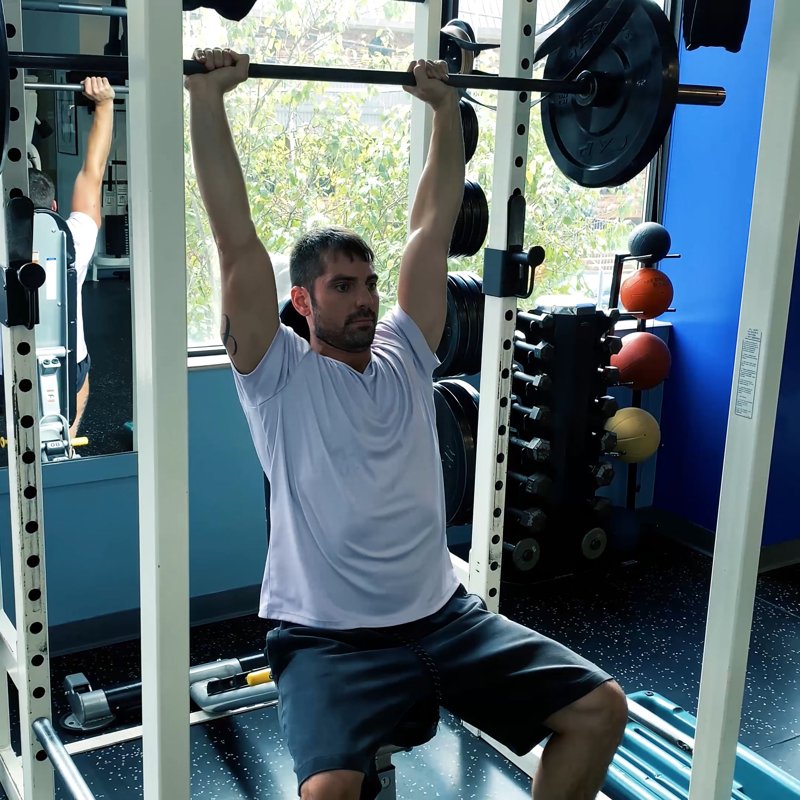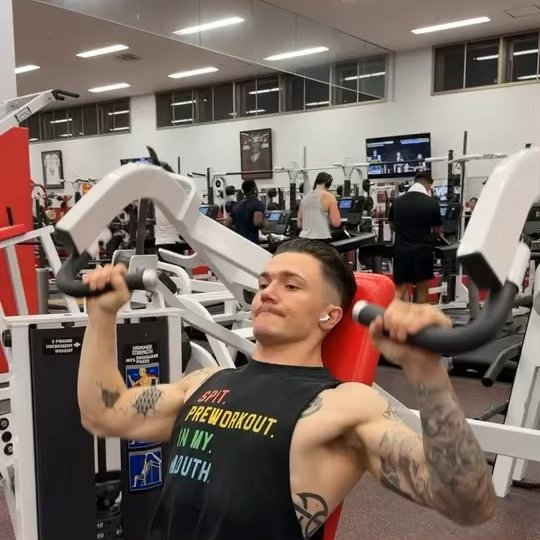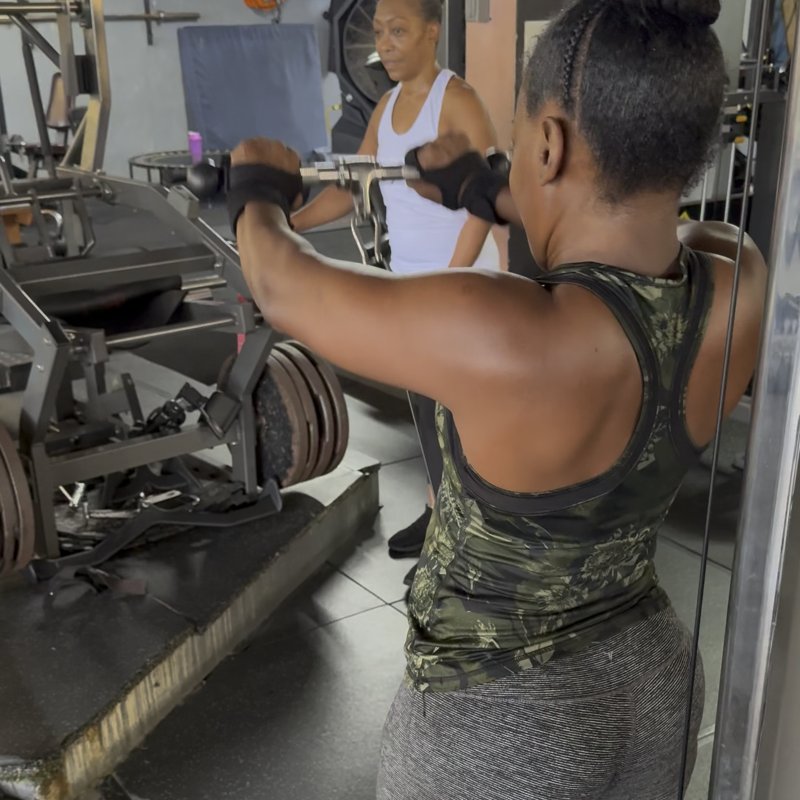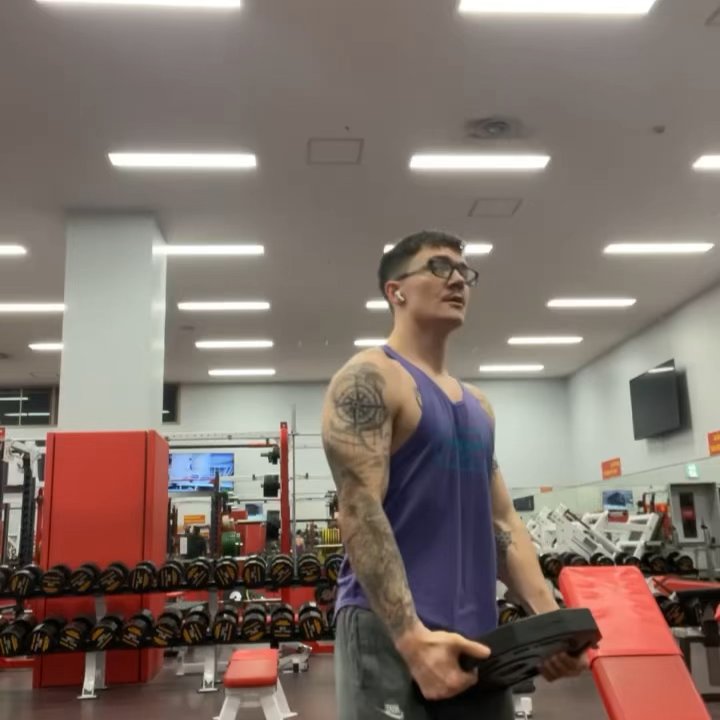Seated Lateral Raise: The Ultimate Guide
The Seated Lateral Raise is an isolation exercise that targets the lateral (middle) deltoids by lifting dumbbells outward from a seated position, creating tension throughout the movement while minimizing body momentum.
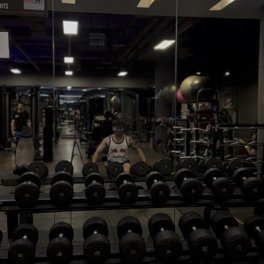
Quick Facts
Key Benefit
Isolated deltoid development with improved form control
Primary Muscles
Medial Deltoids
Secondary Muscles
Abdominals, Anterior Deltoids, Pectoralis Minor, Posterior Deltoids, Traps
Equipment
dumbbells, flat bench (optional), incline bench (optional)
Difficulty
Beginner
Type
Isolation
In This Guide
Ready to master the Seated Lateral Raise?
Track your progress, see improvements over time, and build strength consistently.
Download GravitusThe Seated Lateral Raise stands as one of the most effective isolation exercises for developing broader, more defined shoulders by specifically targeting the lateral deltoid—the middle portion of the shoulder muscle that creates that coveted width and roundness. This seated variation provides distinct advantages over the standing version by eliminating the potential for body momentum and lower body assistance, ensuring that the delicate shoulder muscles receive proper stimulation.
While compound pressing movements like overhead presses are excellent for overall shoulder development, they primarily emphasize the anterior (front) deltoid, often leaving the lateral head underdeveloped. The Seated Lateral Raise addresses this imbalance by isolating the lateral deltoid through its primary function of shoulder abduction—raising the arm away from the midline of the body.
What makes this exercise particularly valuable is how it creates constant tension through a full range of motion with minimal risk of cheating, allowing for proper form execution even for beginners. Whether your goals include aesthetic shoulder development, improved upper body proportion, or balanced shoulder strength for injury prevention, the Seated Lateral Raise provides targeted stimulus with excellent control over technique and tension.
Benefits of the Seated Lateral Raise
The Seated Lateral Raise offers several distinct advantages over standing variations and other shoulder exercises.
Enhanced Isolation
The seated position eliminates the potential to use momentum from the legs and lower body, ensuring the lateral deltoids perform the work rather than momentum.
Improved Stability
Sitting on a bench provides a stable base that allows for better control throughout the movement, particularly beneficial for beginners or those rehabilitating shoulder injuries.
Consistent Tension
The controlled nature of the seated position maintains tension on the targeted muscles throughout the entire range of motion, potentially enhancing muscle fiber recruitment.
Shoulder Width Development
Directly targets the lateral deltoid head responsible for shoulder width and creating that coveted "3D" shoulder appearance.
Balanced Shoulder Growth
Helps correct the common overdevelopment of the anterior deltoid that occurs from pressing exercises, creating more balanced shoulder development and potentially reducing injury risk.
Joint-Friendly Option
When performed with proper form and appropriate weight, provides effective shoulder stimulus with reduced risk of excessive loading that could stress the shoulder joint.
Proper Form & Technique
Setup
- Sit on a bench with your back straight, feet flat on the floor about hip-width apart.
- Hold a dumbbell in each hand with palms facing inward toward your body (neutral grip).
- Allow your arms to hang naturally by your sides, with a slight bend in the elbows.
- Retract your shoulder blades slightly and maintain a neutral spine position.
- Brace your core muscles to stabilize your torso throughout the movement.
- Consider sitting at the edge of the bench to ensure your arms can hang freely without hitting the bench.
Movement
- Maintaining the slight bend in your elbows, raise the dumbbells outward to the sides.
- Keep your wrists in a neutral position (neither flexed nor extended) throughout the movement.
- Focus on lifting with your deltoids rather than traps—avoid shrugging your shoulders.
- Continue raising the weights until your arms are approximately parallel to the floor (or slightly below if more comfortable for your shoulders).
- At the top position, your palms should be facing the floor or slightly angled with pinkies higher than thumbs.
- Briefly hold the contracted position for 1-2 seconds, focusing on the tension in your lateral deltoids.
Return
- Slowly lower the dumbbells back to the starting position with control.
- Maintain tension in your deltoids throughout the lowering phase—don't simply drop the weights.
- Keep your torso stable and resist the temptation to swing or use momentum.
- Continue lowering until your arms are back at your sides, maintaining the slight elbow bend.
- Without pausing at the bottom, immediately begin the next repetition if performing multiple reps.
Key Form Tips
Elbow Position
Maintain a slight bend in the elbows throughout the movement—approximately 10-20 degrees—never fully locked out or excessively bent.
Hand Orientation
Consider turning your thumbs slightly downward (think about pouring water from a pitcher) at the top of the movement to further engage the lateral deltoids.
Range of Motion
For most people, lifting to shoulder height (arms parallel to floor) is sufficient—going higher can increase shoulder impingement risk without adding benefits.
Shoulder Position
Keep shoulders down and back throughout the movement—avoid elevating them toward your ears (shrugging).
Tempo Control
Use a controlled tempo such as 2 seconds up, 1 second hold, 2 seconds down to maximize muscle tension and minimize momentum.
Weight Selection
Choose a weight that allows for proper form—lateral deltoids are relatively small muscles and typically require lighter weights than you might expect.
Muscles Worked
Primary Muscles
- medial deltoids: The middle portion of the deltoid muscle located on the outer surface of the shoulder is the primary target of this exercise, performing the abduction motion that raises the arm away from the midline of the body.
Secondary Muscles
- anterior deltoids: The front portion of the shoulder muscle assists in the movement, particularly in the early phase of the lift and in stabilizing the shoulder joint throughout.
- posterior deltoids: The rear portion of the shoulder muscle provides assistance and stabilization, especially when maintaining proper scapular position during the exercise.
- Supraspinatus: This rotator cuff muscle assists with the initial phase of arm abduction (the first 15-30 degrees) before the deltoid takes over as the primary mover.
- pectoralis minor: Located along the sides of the ribs, this muscle helps stabilize the shoulder blade during the movement, particularly if maintaining proper shoulder positioning.
- traps: These upper back muscles work isometrically to stabilize the shoulder blades in their retracted position throughout the exercise.
- abdominals: The abdominals and spinal erectors work isometrically to maintain proper seated posture and torso stability during the movement.
Common Mistakes and How to Fix Them
Using Excessive Weight
Too much resistance leads to poor form, reduced lateral deltoid activation, and increased injury risk. Select a weight that allows you to perform 10-15 controlled repetitions with proper form. It's common to underestimate how challenging this exercise can be—most lifters use weights that are too heavy. Remember that the lateral deltoid is a relatively small muscle group, so prioritize perfect execution over moving heavy weights. If you cannot maintain proper form throughout the set, reduce the weight by 20-30%.
Shrugging the Shoulders
Elevating shoulders toward ears shifts emphasis to the trapezius and reduces lateral deltoid engagement. Focus on keeping your shoulders pressed down and back throughout the entire movement. A helpful cue is to imagine holding small oranges between your armpits and ribs—don't let them fall. Perform the exercise in front of a mirror initially to monitor shoulder position, or have a training partner provide feedback on your form.
Lifting Arms Too High
Raising dumbbells above shoulder height increases risk of shoulder impingement without additional benefit. Stop the upward movement when your arms are parallel to the floor or slightly below if that feels more comfortable for your shoulders. If you have a history of shoulder issues, consider limiting the range of motion further to the pain-free range. Remember that maximum tension on the lateral deltoid occurs when the arm is approximately parallel to the floor.
Using Momentum
Swinging the torso or using arm momentum reduces muscle activation and increases injury risk. The seated position should help eliminate this issue, but still focus on strict movement initiated by the deltoids. Use a controlled tempo (2 seconds up, 1 second hold, 2 seconds down) and visualize your deltoids doing the work. If you catch yourself swinging, reduce the weight immediately. Consider pausing briefly at the bottom of each repetition to eliminate bouncing between reps.
Incorrect Wrist/Hand Position
Letting wrists bend or using improper hand orientation reduces effectiveness and increases wrist strain. Maintain neutral wrists aligned with your forearms throughout the movement. At the top position, your palms should face downward or with pinkies slightly higher than thumbs (slight internal rotation). Think about pouring water from a pitcher at the top of the movement, which creates optimal lateral deltoid engagement and reduces stress on the shoulder joint.
Excessive Elbow Flexion
Bending elbows too much shifts emphasis from shoulders to arms and reduces lateral deltoid activation. Maintain a consistent, slight bend in the elbows (approximately 10-20 degrees) throughout the entire movement—neither fully straight nor significantly bent. Using very light dumbbells for practice repetitions can help establish the proper arm position before progressing to working weights. Focus on moving your arms as a single unit without changing the elbow angle during the lift.
Exercise Variations
Grip Variations
-

Thumbs-Up Seated Lateral Raise
Performed with thumbs pointing upward throughout the movement (neutral grip), which can be more comfortable for those with certain shoulder issues.
-

Pronated-Grip Seated Lateral Raise
Using an overhand grip (palms facing down) throughout the entire movement, which some find creates stronger lateral deltoid contraction.
-

Thumbs-Down Seated Lateral Raise
Rotating to a thumbs-down position at the top of the movement (palms facing backward), which increases external rotation and potentially enhances lateral deltoid activation.
Equipment Variations
-
Cable Seated Lateral Raise
Using a low cable pulley instead of dumbbells, which provides consistent tension throughout the range of motion, particularly at the bottom portion of the movement.
-

Resistance Band Seated Lateral Raise
Performed with bands secured under the feet or bench, offering accommodating resistance that increases as the band stretches toward the top of the movement.
-

Plate Seated Lateral Raise
Holding weight plates instead of dumbbells by pinching them between thumb and fingers, which increases grip challenge and alters leverage slightly.
Execution Variations
-

Partial Seated Lateral Raise
Performing the movement in a limited range of motion, either the bottom half or top half of the full range, to focus on specific portions of the strength curve.
-

Leaning Seated Lateral Raise
Leaning slightly away from the working arm when performing single-arm variations, allowing for greater range of motion and enhanced stretch on the lateral deltoid.
-
Tempo Seated Lateral Raise
Manipulating the speed of different phases of the movement, such as using a very slow (4-5 second) raising phase or a 2-second pause at the point of peak contraction.
-

21s Seated Lateral Raise
Performing 7 partial reps in the bottom half of the range, 7 partial reps in the top half of the range, and 7 full range of motion reps to create comprehensive fatigue.
Frequently Asked Questions
The primary difference between seated and standing lateral raises lies in stability and momentum control. The seated position eliminates the potential to use lower body momentum and "body English" that often occurs in the standing version, where lifters might unconsciously sway, bounce, or use subtle leg movements to assist the lift. This forced stability typically results in stricter form and more direct lateral deltoid targeting, often necessitating lighter weights than you might use when standing. Additionally, the seated position provides a consistent reference point for posture throughout the set, helping maintain proper torso alignment. From a mind-muscle connection perspective, many lifters report better focus and deltoid activation when seated due to the reduced need to stabilize the entire body. That said, the standing version offers its own advantages, including greater functionality and the ability to handle slightly heavier loads for stronger individuals. Both variations are valuable, with the seated version typically being better for beginners, those focusing on strict form, or during rehabilitation, while the standing version might be preferred for advanced lifters seeking to progress load or those training in time-restricted sessions.
For most individuals, raising the dumbbells to shoulder height (arms parallel to the floor) represents the optimal endpoint for the lateral raise movement. Lifting significantly higher—where the elbows elevate above shoulder level—offers minimal additional benefit for lateral deltoid development while potentially increasing risk of shoulder impingement, particularly for those with existing shoulder issues or limited mobility. Biomechanically, the lateral deltoid achieves peak contraction when the arm is abducted to approximately 90 degrees, with diminishing returns beyond this point as other muscles begin to take over. Additionally, raising beyond shoulder height often triggers compensatory movements like shrugging or internal rotation that reduce the exercise's effectiveness. That said, individual anatomy and shoulder health vary considerably—some lifters with excellent mobility and healthy shoulders may safely work in a slightly expanded range, perhaps 10-15 degrees above parallel. The most important guideline is to work within a pain-free range that allows for proper form maintenance. If uncertain about your optimal range, consider consulting with a physical therapist or qualified trainer who can assess your individual shoulder mechanics.
Appropriate weight selection for Seated Lateral Raises tends to surprise many lifters, as effective loads are typically much lighter than expected. The lateral deltoid is a relatively small muscle group working at a mechanical disadvantage during this movement, making it a humbling exercise even for those strong in other lifts. For beginners, starting with very light dumbbells—often just 2-5 pounds for women and 5-10 pounds for men—allows for mastering proper form and developing the crucial mind-muscle connection. Intermediate lifters with good technique might progress to 7-15 pounds for women and 10-20 pounds for men, while advanced trainees might occasionally work with 15-25+ pounds depending on individual strength and execution style. Rather than focusing on specific numbers, select weights that allow you to perform your target repetitions (typically 10-15) with proper form, where the final 2-3 reps challenge you significantly but don't require momentum or form breakdown. Remember that lateral deltoid development depends far more on proper execution, full muscle activation, and consistent training than on the absolute weight used. Many experienced bodybuilders with impressive shoulder development still use surprisingly moderate weights on this exercise, prioritizing perfect form and complete muscular tension over ego lifting.
For most recreational lifters, incorporating Seated Lateral Raises 1-3 times per week provides sufficient stimulus for development while allowing adequate recovery. If following a body-part split routine, include them on your designated shoulder or upper body day. For those on push/pull/legs splits, they fit naturally into push workouts. If you're training with higher frequency using full-body or upper/lower splits, you might include them in 2-3 weekly sessions, potentially varying the execution style, rep ranges, or intensity techniques between workouts. For optimal development, consider rotating between different lateral raise variations across your training week—perhaps using seated dumbbell raises in one session, cable lateral raises in another, and a more intense technique like drop sets or partial reps in a third. Recovery needs vary by individual and training experience; beginners might start with once weekly frequency and gradually progress to twice weekly as adaptation occurs, while advanced trainees can often handle higher frequency with properly managed volume. Pay attention to performance indicators and recovery markers—persistent shoulder soreness, decreased strength, or technique degradation may signal insufficient recovery between sessions, indicating a need to reduce frequency or volume.
While Seated Lateral Raises can contribute to improved shoulder posture, they represent just one piece of a comprehensive approach to addressing rounded shoulders. The exercise effectively strengthens the lateral deltoids, which can help with overall shoulder positioning, but rounded shoulders typically stem from multiple factors including tight anterior (front) shoulder muscles, weak posterior chain muscles (rear deltoids, rhomboids, and mid/lower trapezius), and habitual forward posture patterns. For optimal postural improvement, combine lateral raises with exercises that directly target these other components—particularly external rotation movements, face pulls, rows, and rear deltoid work to strengthen the upper back, along with chest and anterior deltoid stretching to address tightness. Additionally, conscious postural awareness throughout the day often proves more impactful than any individual exercise. When performing Seated Lateral Raises specifically for postural benefits, pay particular attention to scapular positioning—maintain a slight retraction of the shoulder blades (pulling them back and down) throughout the movement, which reinforces proper upper back engagement. This retracted position during the exercise helps counter the common forward shoulder position associated with modern lifestyle factors like desk work, driving, and smartphone use.
Video Demonstrations
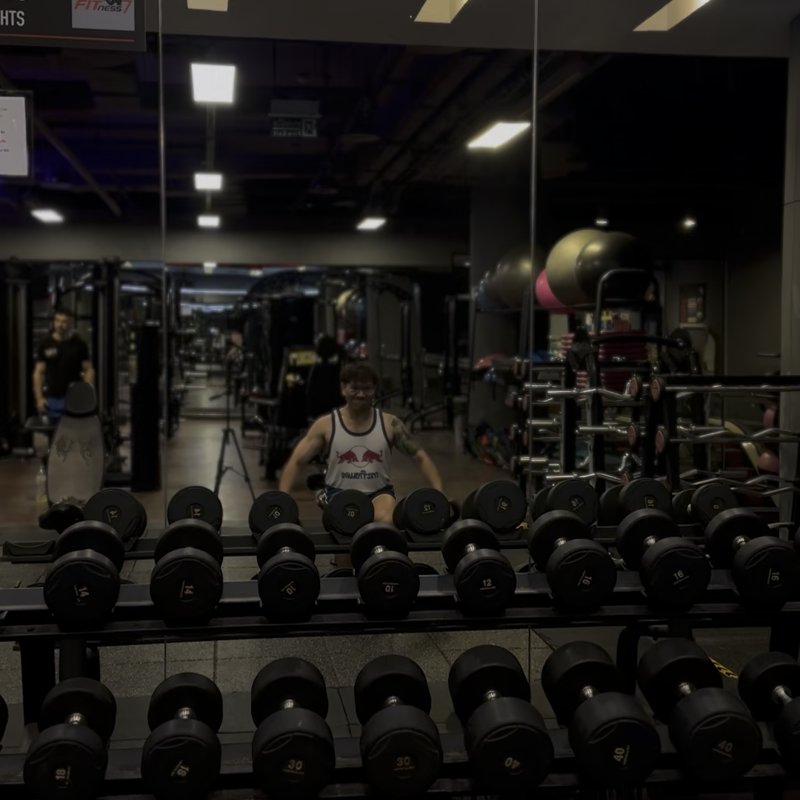
Log in to watch video demonstrations
Login to Watch3 video demonstrations available
Tips from the Community
-

This is a burnout exercise, try to maintain form, quick rests if necessary to finish each set.
-

Sets 5 thru 8 are supersets
Track your progress with Gravitus
Download Gravitus to log your workouts, track your progress, and join a community of fitness enthusiasts.

Helpful Resources
One Rep Max Calculator
Find your one rep max for any exercise without maximal testing. Essential for developing effective strength training programs.
Calculate 1RMWorkout Programs
Follow structured workout programs created by fitness professionals to maximize your strength and muscle gains.
View Programs

